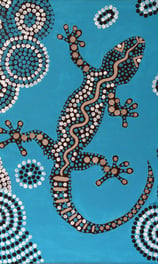History of Dingaal's Lizard Island
Dyiigurra Island
(The Stingray)
Ancient Beginnings
The history of Dingaal's Lizard Island is as ancient as the landscape itself. Once part of the Australian mainland, the islands emerged as distinct entities a mere 9,000 years ago with the last sea level rise. The enduring pink-grey granite rocks, formed approximately 300 million years ago, narrate a tale of slow cooling, erosion, uplift, and tilting, creating the mesmerising granite hills surrounded by Golden Sand and Cristal Clear Water seen today.
Lizard Island was known by the Dingaal Aboriginal people as Dyiigurra. The Dingaal people have own the land from thousands of years and regarded Dyiigurra as a sacred and significant place.


Aboriginal Roots
For Thousands of Years Lizard Island has held sacred meaning and Significance to the Dingaal Aboriginal people who have called their island "Dyiigurra". The local Dingiil Aboriginal people have also been known to call the island Jiigurru. It served as a site for the initiation of young Dingaal males and a bounty for harvesting shellfish, turtles, dugongs, and fish.
The Dingaal people believe the island group was created in the Dreamtime, envisioning it as a stingray with Lizard Island forming the body. Gordon Charlie, a respected Elder and Tribal Leader from the Dingaal Family, carried forward the oral traditions, passing down the Traditional Legendary stories of their ancestral connection to the land. His legacy, continued by Ruth, his life partner, and Douglas McCoy, a brother, represents a commitment to preserving the historical land owner cultural heritage.




Aboriginal Art
European Encounter
In 1770, Captain James Cook named the island "Lizard Island" during his exploration where he was welcome by the Local Dingaal land owners.
By the 1860s, it became a hub for sea cucumber fishermen. The tragic events of 1879, involving Captain Robert Watson and his family, echo the clashes between European visitors wanted to settle and Aboriginal Land owners and inhabitants.
Captain Cook had no title to Lizard Island even though European and English fishermen cam to make their living and colonise.
The Dingaal Tribe of First People are the Allodial Titleholders across this group of Island and northern section of what is called now Queensland. "Australia" is a British Crown owned construct.


Mrs Watson's Cottage
In 1879, Captain Robert Watson with his wife Mary Watson, two servants and baby son, modified an abandoned cottage left on the island by the crew of the Julia Percy. The ruins are still visible. Captain Watson was a sea cucumber fisherman and during one of his absences, Mary Watson had trouble with the Aboriginal people, Not the Lizard island Dingaal aboriginals, but an Aboriginal from the mainland and one of her servant was killed. which led to Mary floating to Howick Island where her and Child died.
The establishment of Mrs. Watson's Cottage and subsequent heritage listings mark pivotal moments in the island's European history. In 1939, the new settlers on the islands wanted to establish a national park status, setting the stage for a new chapter in conservation.


Lizard Island is
the Most Beautiful Island in the World
Archaeological Marvels
The island's archaeological richness is evident in sites like Site 17 and Mills Excavation. Pottery sherds, middens, and excavations reveal a deep history, offering glimpses into the lives of the Dingaal Aboriginal people.


Archaeological dig at Lizard Island
From Tragedy to Preservation
The 20th century witnessed the island's transformation into a national park, emphasizing conservation. Today, Dingaals Lizard Island stands as a testament to the intersection of ancient Aboriginal heritage and contemporary conservation efforts.
Explore the island's history to understand the intricate tapestry that weaves together the stories of its people and the evolution of Dingaals Lizard Island into a haven for both nature and history enthusiasts.


